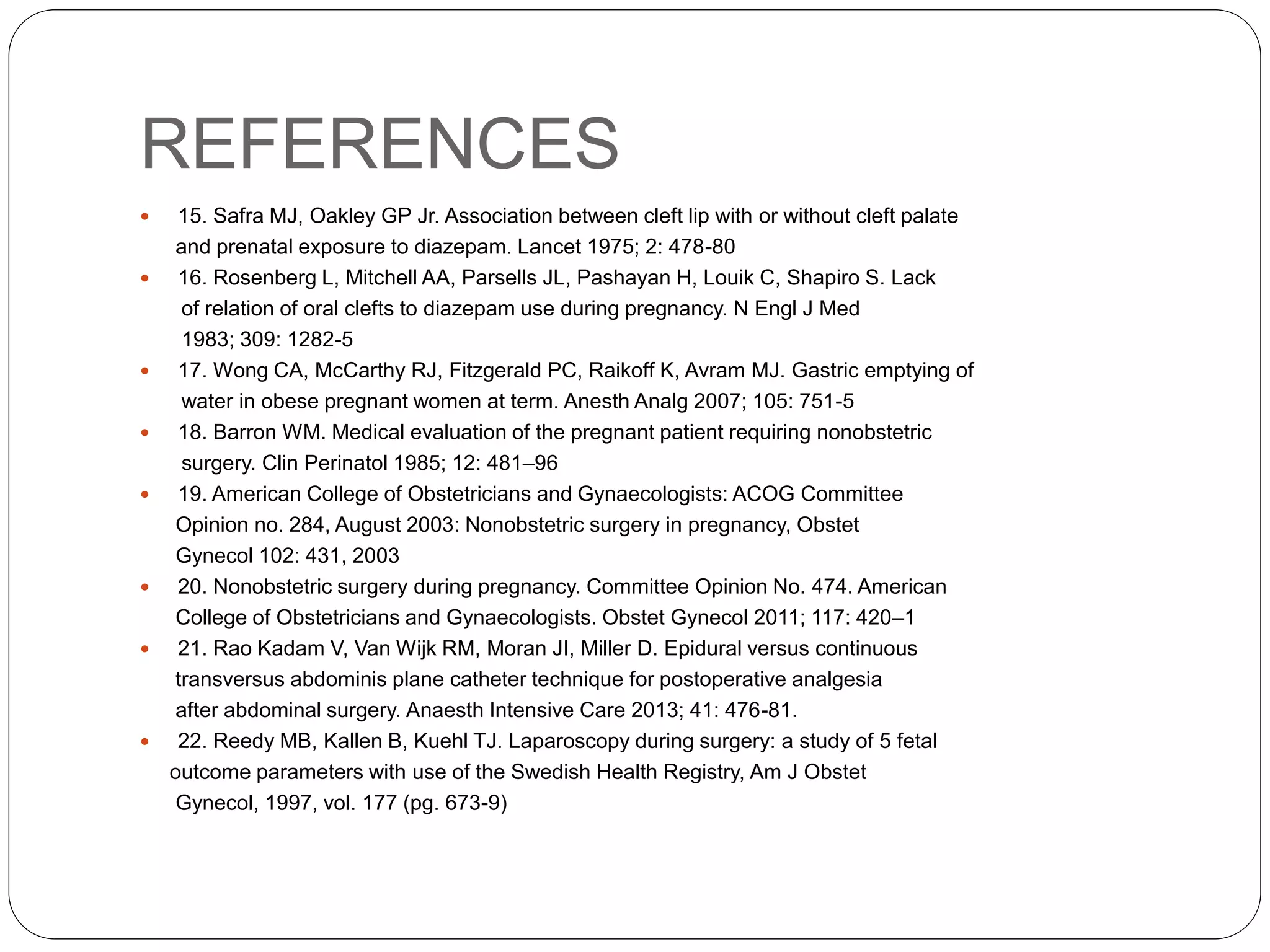1) Non-obstetric surgery during pregnancy presents challenges as the anesthetist must care for both the pregnant woman and fetus. Regional anesthesia is preferred when possible to minimize fetal drug exposure.
2) The goals of anesthesia management are to optimize maternal physiology and uteroplacental blood flow, avoid unwanted drug effects on the fetus, and prevent preterm labor. General principles include fluid management, thromboprophylaxis, and fetal monitoring.
3) Laparoscopy can be performed safely during any trimester with low pneumoperitoneum pressures and fetal monitoring. Cardiac and neurosurgery also require careful management of hemodynamics and oxygen delivery to maintain uteroplacental perfusion.








































